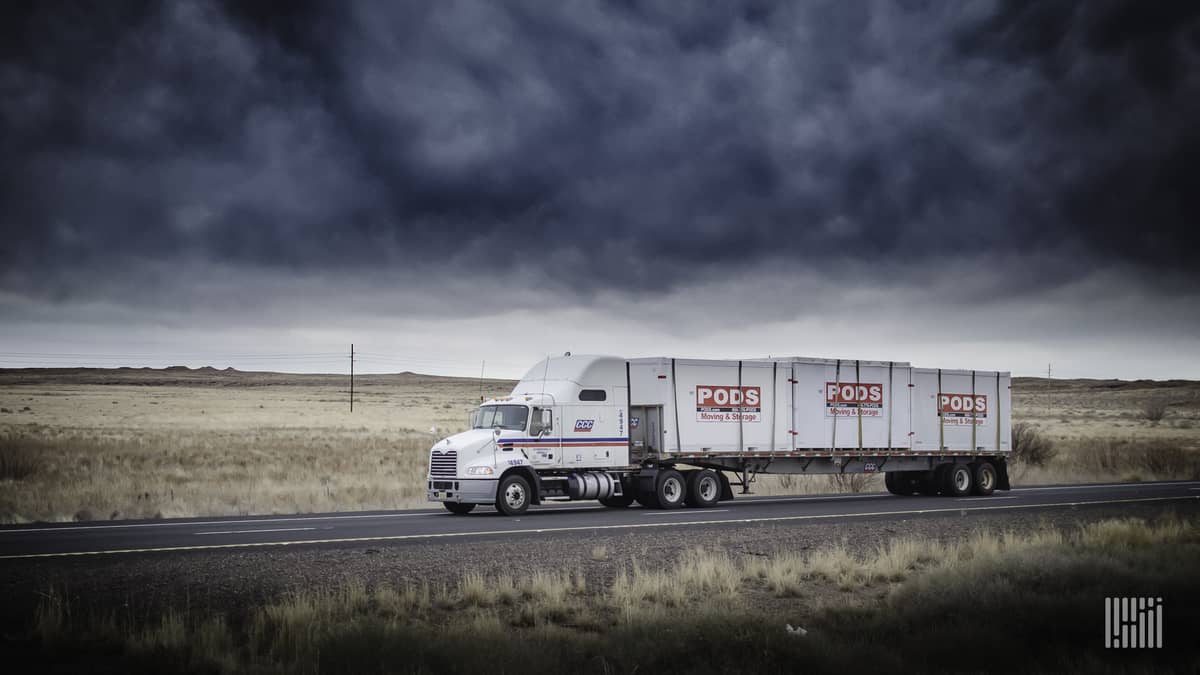Comcar dropped $25 million in 2019 before Chapter 11 bankruptcy filing

Story by: John Kingston at FreightWaves
The bankruptcy of privately held Comcar was fueled by the same weak trends that have befallen many trucking companies, with the added burden of a significant amount of debt.
Comcar filed its bankruptcy documents in Delaware on Sunday, May 17, along with a public announcement of its Chapter 11 filing and the sale of its operating units. Unlike the bankruptcy of Celadon, the bankruptcy and breakup do not show any signs of leaving drivers stuck out in the field, with a plan to sell its operating units to new owners.
“The sale of substantially all assets of the company through a Chapter 11 process is in the best interests,” according to a declaration submitted by chief restructuring officer Andrew Hinkelman. “The alternative was certain liquidation and loss of the company’s 950 jobs.”
According to the filing, as of March 27 Comcar had approximately $66.7 million in assets on a net book basis. Liabilities consisted of $85.6 million, with about $46.3 million of those long-term liabilities.
Celadon, by contrast, had long-term liabilities of just under $300 million when its bankruptcy was filed late last year. However, $33 million of that were funds owed to the U.S. Department of Justice as a result of the government probe into the accounting irregularities that ultimately sunk the company.
The most information-laden document about how Comcar got to this point is a declaration by Hinkelman in support of the company’s bankruptcy filing. Hinkelman is also a senior managing director of FTI Consulting, brought in by Comcar to help the company through its restructuring.
According to the Hinkelman document, the four operating divisions of the company lost $25 million last year and $6 million this year through March 27.
In December, the year-over-year drop in revenue was 26%, with its CCC unit down 44.2%. CCC is a bulk carrier. MCT, a refrigerated and dry van carrier, had a revenue drop of 25.8% in that time period. Chemical carrier CTL suffered a 21.4% decline, while flatbed carrier CT had a drop of 19.7%, according to the filing. A total revenue figure was not disclosed.
“Currently, the company is one of the largest privately owned transportation companies with over 40 strategically located terminal and satellite locations across the country,” Hinkelman wrote to kick off his summation of the company’s background.
Among its problems was a driver shortage. “In September 2019…the company was experiencing a significant seated truck shortfall with a 100 net driver deficit,” according to the document.
Among the statistics Hinkelman spells out for the operating units:
- CCC mostly operates in Florida and Georgia and is considered the company’s flagship. About 65% of its business is moving construction materials. It has 12 employees, 85 drivers, 127 company trucks, 257 tankers, 14 dry vans and 22 storage trailers.
- Flatbed hauler CT has 249 drivers, 295 trucks, 569 flatbed trailers and nine owner-operators.
- Chemical carrier CTL has six terminals, 147 drivers, 160 trucks, 332 tankers and 18 dry vans.
- Reefer and dry van carrier MCT has 41 employees in five terminals, 129 drivers, 135 trucks, 88 owner-operators, 315 reefer vans and 263 dry vans.
Read the full story and more HERE at freightwaves
Read related story bout latest Comcar bankruptcy HERE at itrucker.com
Source of original story and credits: freightwaves



